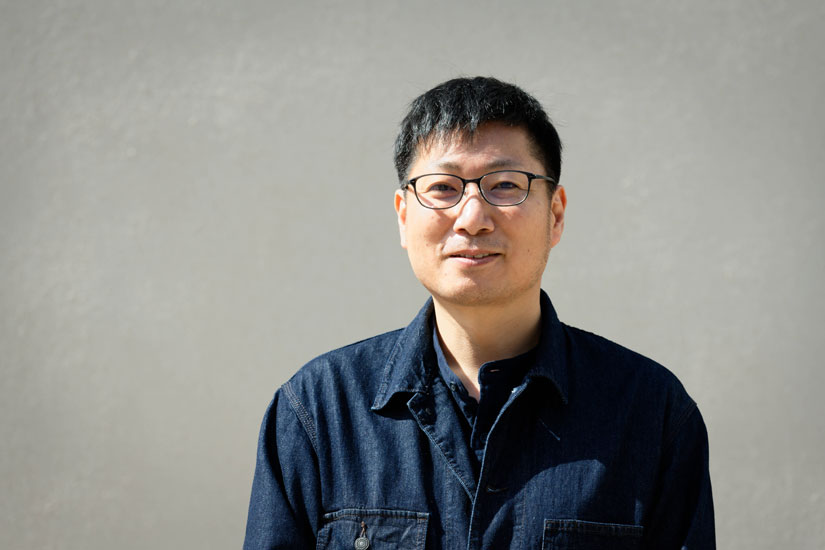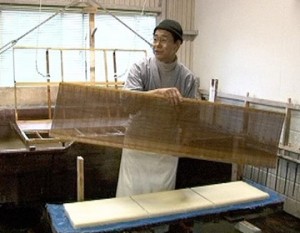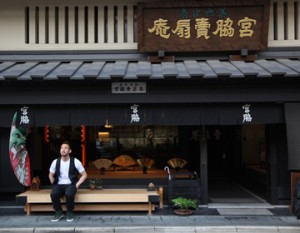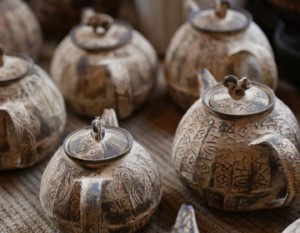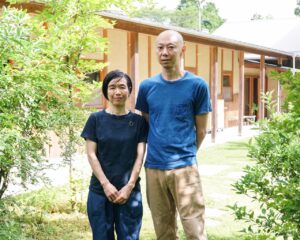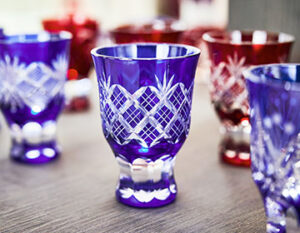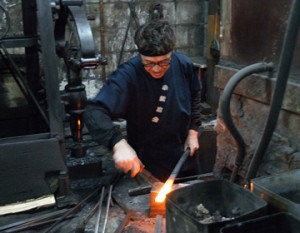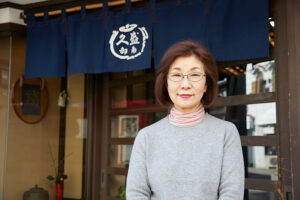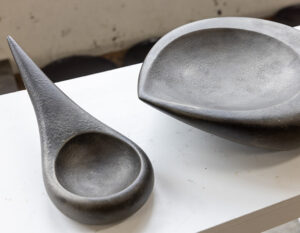Born and raised in Takayama, a town renowned for metalworking in Toyama Prefecture, the roots of this family trace back to a foundry artisan who served the Kaga feudal lord Maeda Toshinaga. As the third-generation Hata Shunsai, he creates tea kettles with a modern interpretation. While preserving tradition, he deliberately breaks away from conventional norms to propose tea kettles that harmonize with contemporary lifestyles. At the core of his work is the simple desire to “share the joy of tea with as many people as possible.”
Preserving tradition. The courage to challenge without fear.
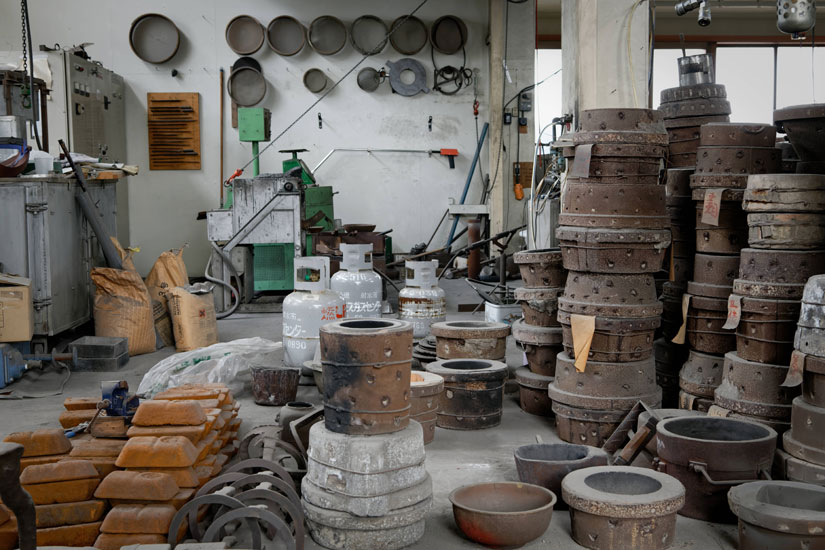
About a 30-minute walk from the ruins of Takayama Castle lies Kanaya-machi, a town that has flourished as the center of Takayama’s copperware industry. The area is home to numerous shops specializing in “casting”—the process of pouring molten metal into molds to create shapes—and “metalwork,” the craft of creating decorative items from metal.
In this town, Mr. Hata was born into a family that manufactures tea kettles used in the tea ceremony. From a young age, he grew up watching his grandfather and father at work. His family traces its roots back to Kamaya Hiko-bee, a foundry artisan who moved to Kanaya-machi when Maeda Toshinao, the second lord of the Kaga domain, established his castle in Takayama. In 2010, Mr. Hata inherited the family name “Hata Shun-sai,” which had been passed down through generations.
The only material used is iron, where sensitivity and aesthetic sense come to life in the tea kettles.
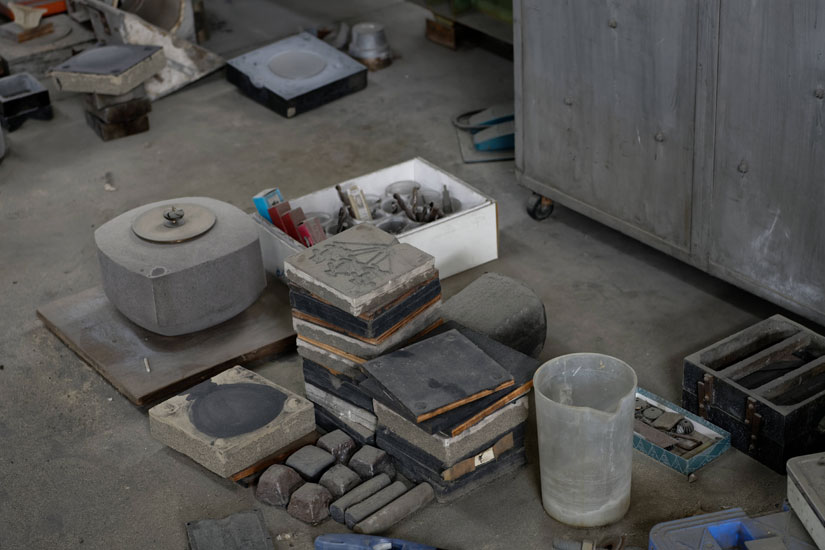
In the world of tea ceremony, which values tradition, various materials such as stainless steel and ceramic have been used for tea kettles in recent years. Among them, Mr. Hata uses only iron. With a background in casting as a family business for generations, he deliberately limits his materials to iron, pursuing expressions that can only be achieved with this metal. “I want to highlight the unique presence of iron in the tea room,” he says with conviction.
This bold choice drives new challenges. Constraints are the source of innovation. He continues to face iron with unwavering dedication, never stopping his journey as the third-generation Hata Harusai.
His recent works combine a smooth texture, approachability, and a touch of sleek sophistication. They seem to effortlessly bring out the diverse expressions of iron.
See, touch, feel. Constantly refining his sense of style.
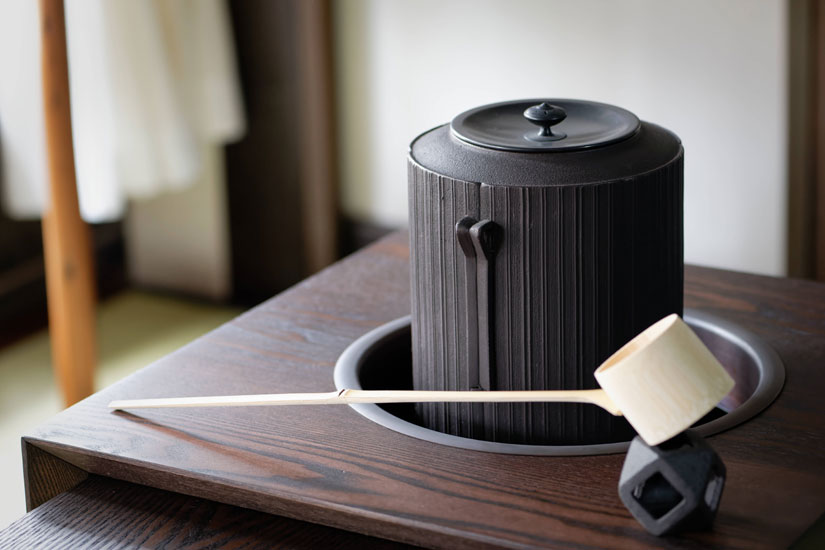
What he values most in his work is seeing and touching various things to cultivate his sensibilities. Needless to say, he draws inspiration from tea kettles, tea ceremony utensils, and other art and craft items on a daily basis, constantly updating his values. Sometimes he travels to distant places to learn more by talking with the makers themselves.
Another important practice is revisiting the works of his grandfather and father. He compares them with his own creations, constantly questioning the differences. By engaging with a wide range of works across eras and genres, he gradually incorporates these influences into his own creations. With the pride of a kettle maker in his heart, every day is a continuous process of trial and error.
Expanding with Collaboration
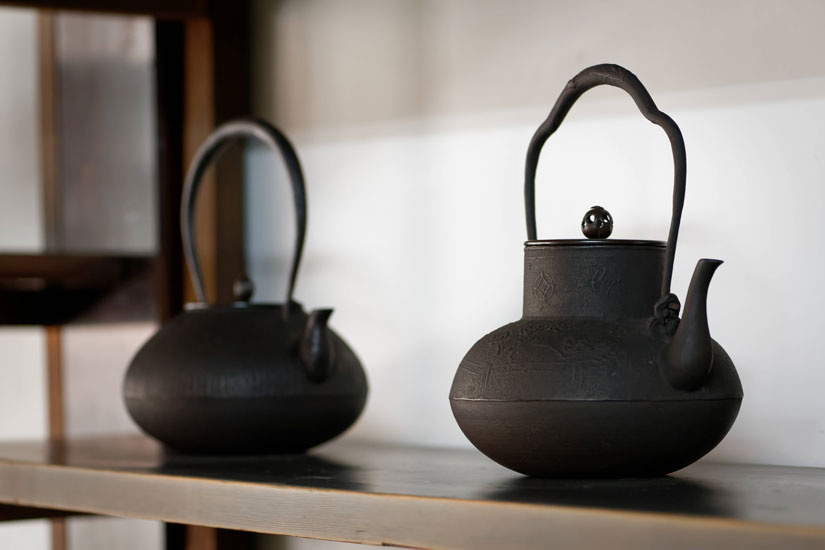
The tea ceremony embodies the Japanese spirit and sense of beauty. Among its various forms, tea gatherings have long been cherished as occasions to enrich time spent with loved ones. However, according to a survey by the Agency for Cultural Affairs, the number of people practicing tea ceremony peaked at 6 million in the 1990s and has since declined to less than 1.8 million today.
In response to this situation, Mr. Hata has been actively promoting the appeal of tea ceremony while continuing his work as a kettle maker. To dispel the image that tea ceremony is “formal and difficult,” he collaborates with other artisans to organize various events. His target audience is young people who have grown distant from tea ceremony, and he is exploring ways to spark their interest. His motivation is simply his desire for more people to enjoy tea.
The charm of tea ceremony lies not only in savoring tea but also in the unique exchange of experiences. At a tea ceremony, one can admire hanging scrolls and crafts, enjoy the scenery outside the tea room, and feel a sense of fulfillment through shared moments.
Recently, we have collaborated with Shimoo Design, a popular woodworker from Toyama, and Miyake Mai, a contemporary artist and sculptor. We propose arrangements that respect tradition while adapting it to the modern era. We strive to create works that are not valued simply because they are traditional, but because they are inherently appealing.
Making tea ceremonies more appealing. Never flashy, but expressing a unique worldview.
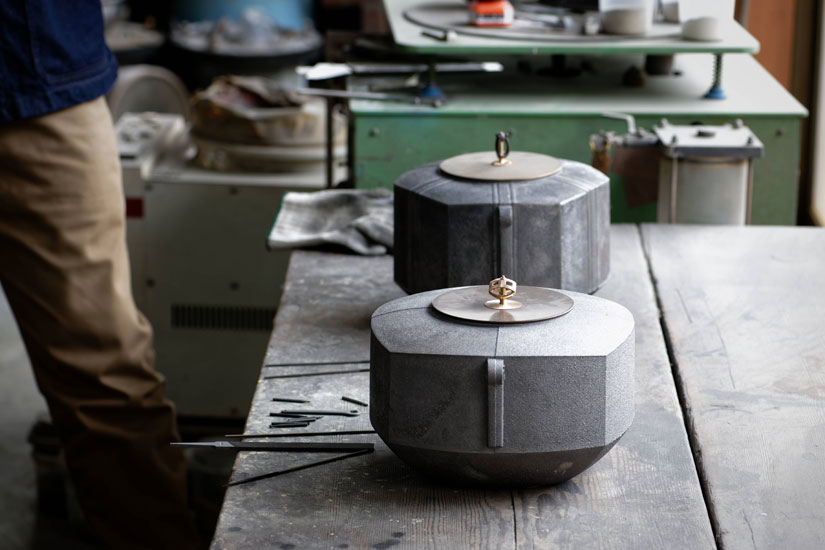
The unique presence of Mr. Hata’s teakettle. It is born from a deep understanding of the “role” of the teakettle as a tool, in addition to its beautiful shape. At a tea ceremony, the host arranges the furnishings according to the guests. Each piece must be balanced so that the host can offer a sincere welcome. If one piece stands out too much, it can completely change the atmosphere.
“I think of the tea kettle as the pillar of a house. It’s not something that seeks to be unusual, but it still demands a noble presence.”
The tea kettle stands at the center of the tea ceremony, supporting the worldview. Mr. Hata, who creates tea kettles that embody individuality while maintaining a presence as part of the tea ceremony, receives a steady stream of requests for his work.
Transcending traditional boundaries, creating a free and approachable tea ceremony.
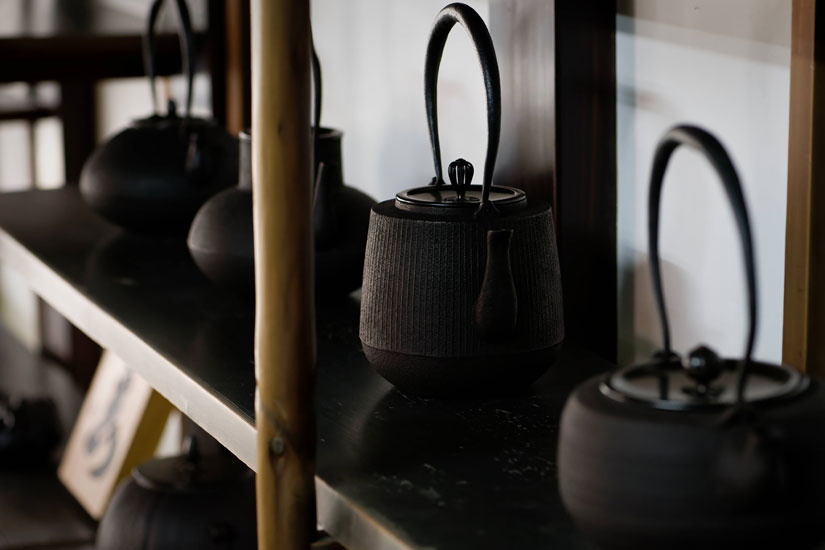
Throughout the generations, the Hata Harusai family has adapted their craftsmanship to the times. The first generation, inspired by his wartime experiences, dedicated himself to creating tea kettles with the belief that “while I am alive, I want to leave something good behind.” The second generation built upon the first’s teachings, infusing innovative ideas to bring a fresh perspective. The third generation, in turn, added modern elements to highlight the tea kettle’s newfound charm.
“While the material we use is iron, we aim for works that are not just heavy and solid,” says Mr. Hatake with a gentle smile. The smooth texture that highlights the refined design evokes a sense of warmth. Even those unfamiliar with tea ceremony might find themselves reaching out to touch it, drawn by its approachable charm.
Iron, often perceived as heavy and rigid, actually combines strength and flexibility, transforming freely when heated. Mr. Hata’s work fully utilizes these characteristics. By adding new pieces to the world that values tradition, he may spark interest in tea ceremony among those who have never had the opportunity to experience it before.
Tradition continues to evolve. Enjoying tea in a casual way.
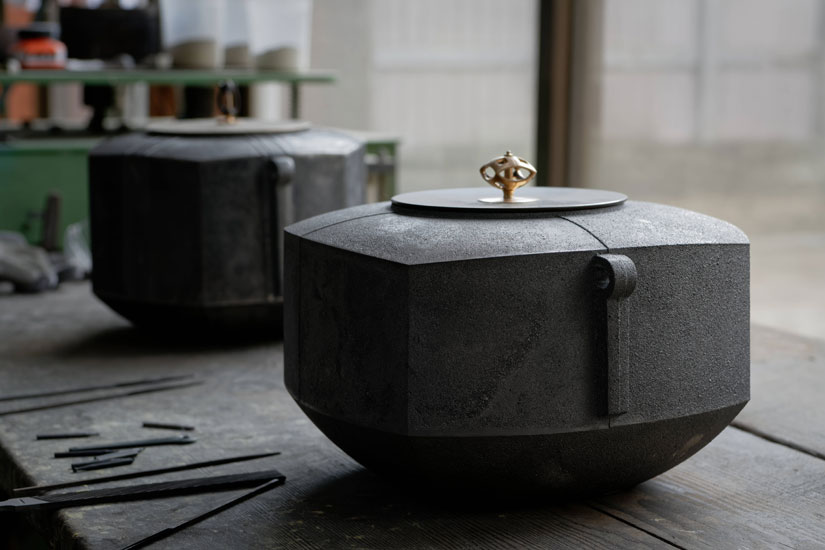
Every aspect of tea ceremony etiquette has a meaning. However, just as tea ceremony, which was once considered a pastime of samurai, became popular among the common people, it has continued to change with the times.
The era of mass production and mass consumption is over, and now we live in a time where it is important to cater to the needs of each individual. Flexibly adapting to changes in lifestyles and values is what leads to the preservation of tradition. Mr. Hata’s work is deeply rooted in this craftsmanship.
Tea ceremony was originally intended to be enjoyed with cherished people. While etiquette is important, the essence lies in the heartfelt desire to care for and entertain others. Mr. Hata’s ongoing efforts aim to capture the true spirit of tea ceremony and make it more accessible to younger generations. We look forward to seeing what innovative works he will create in the future.



